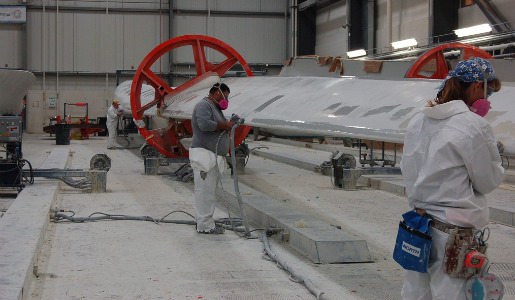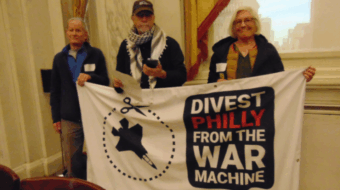
WASHINGTON (PAI) – The Steelworkers union and the American Wind Energy Association have signed an agreement on working together to develop the wind power industry, emphasizing the need for alternative energy devices – windmills and wind turbines generating electricity – produced by U.S. workers in U.S. factories.
Key parts of the pact include lobbying for a national standard ordering U.S. utilities to purchase a set percentage of their power from renewable sources – wind, solar, hydro, etc. – and for tax incentives to ensure the parts for the wind turbines and associated power plants and transmission lines are manufactured here, not overseas.
“We expect this framework will help advance the promise of green jobs being key to our future. The nation cannot continue to fall behind other countries on clean energy manufacturing,” said Steelworkers President Leo Gerard.
“If we do not act quickly on this opportunity through federal leadership and industry commitment, we will have done a disservice to our citizens,” he said. “The agreement is designed to create a partnership for progress that doesn’t accept second place, and instead, puts the U.S. at the leading edge” in clean energy, he added.
“We’re really excited. This will allow us to diversify our electrical power to a renewable power portfolio,” Gerard told a telephone press conference.
The Steelworkers have led the way in the union movement in arguing for building factories to manufacture “green” products, such as wind generators and turbines, solar panels and hybrid car batteries. Not only would doing so revitalize U.S. manufacturing, they contend, but it would also produce high-paying jobs.
They cite the example of Gamesa, a Spanish wind-turbine manufacturer that bought a former steel mill in the Pittsburgh area, converted it to making wind turbines and now employs several hundred Steelworkers doing so.
But wind power and other alternative energies have yet to get off the ground due to lack of investment. That’s because federal tax credits for such alternative energy investment expire every several years, making financial institutions reluctant to commit money. The American Wind Energy Association (AWEA) adds that banks don’t lend because many of the wind energy firms are “too small,” to quote the group’s chairman. Gerard also noted construction of some alternative energy plants, though not necessarily wind power plants, can take a decade.
“We have a lot of challenges due to that lack of a long-term commitment. We only have a short-term tax policy,” he said. So financing is lacking, he pointed out.
“A stable and secure financial climate allowing AWEA members to plan for the future, while getting the capital to achieve those plans, is a necessary ingredient to expanded utilization of domestic supply chains,” Gerard added. “Steelworkers, and all Americans, want to know that we will take every step necessary to create a plan for long-term economic growth.”
Denise Bode, the CEO of the 2,300-member wind energy group, said the pact with the USW ensures that this sector “is the first major player in the energy industry to clearly show its commitment to utilizing domestically located sources of supply.
“Job creation and long-term growth in this sector require a comprehensive public policy agenda,” Bode added. “That agenda will require some federal resources, but most importantly, it will require the national commitment to clean and green energy essential to the future of the industry. Our partnership will help achieve these goals.”
The agreement drew immediate support from Sen. Sherrod Brown, D-Ohio. He said wind energy plants already bring new jobs to his economically depressed state. He also stressed the need to rebuild the nation’s factory base.
“Thirty years ago, 30 percent of our GDP was in manufacturing and 11 percent to 12 percent was in finance. Today that’s almost flipped — and we know where that’s taken us,” he said, referring to the current Great Recession caused by financial excesses and speculation. “So this is a big step the wind industry has taken, with our encouragement.”
Brown did not say what the chances are of approving a long-term tax credit for alternative energy.
“But there are 8,000 parts needed to produce a wind turbine,” he said. “I have people – tool and die makers, machine shops, auto parts dealers – coming to me and saying ‘I want to be part of the supply chain'” for wind power.”
See also: AFL-CIO head: Time to take green jobs seriously
Photo: Workers finish a turbine blade at the Gamesa plant in Pennsylvania. PW/Teresa Albano










